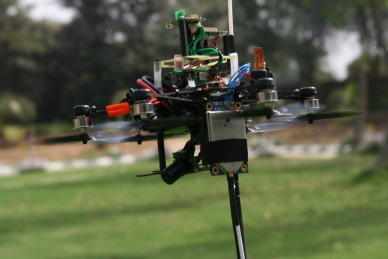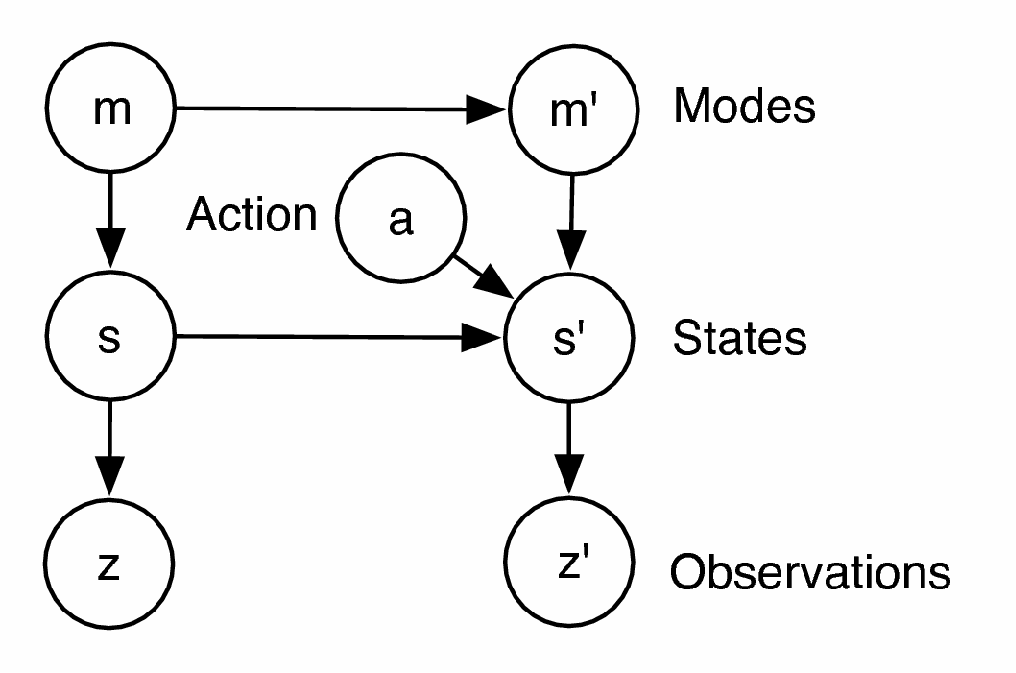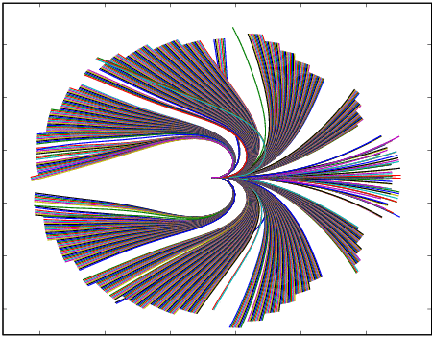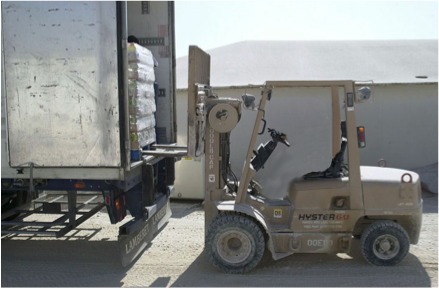 |
ROBUST ROBOTICS GROUP|MASSACHUSETTS INSTITUTE OF TECHNOLOGY |
|
|
| |
HOME RESEARCH
PEOPLE PUBLICATIONS
|
|
|
 |
| |
Our
Hornet hexrotor helicopter |
|

|
 |
| Micro-Air Vehicle Navigation and Control |
In environments where GPS is noisy and
maps are unavailable, such as indoors or in dense urban
environments, a UAV (unmanned air vehicle) runs the risk
of becoming lost, operating in high threat regions, or
colliding with obstacles. The size, weight and budget
limitations of micro air vehicles (MAVs) typically
preclude high-precision inertial navigation units that
can mitigate the loss of GPS. We are developing
estimation and planning algorithms that allow MAVs to
use environmental sensors such as range finders to
estimate their position, build maps of the environment
and fly safely and robustly.
- Ruijie He, Sam Prentice
and Nicholas Roy. ``Planning in Information Space for a
Quadrotor Helicopter in a GPS-denied
Environments''. Proceedings of the IEEE International
Conference on Robotics and Automation (ICRA 2008). Los
Angeles, 2008.
- Abraham Bachrach, Alborz Garamifard,
Daniel Gurdan, Ruijie He, Sam Prentice, Jan Stumpf and
Nicholas Roy. ``Co-ordinated Tracking and Planning using
Air and Ground Vehicles''. In Proceedings of the
International Symposium on Experimental Robotics (ISER),
Athens, 2008.
|
|
|
|
 |
| |
 |
 |
 |
| |
|
|
|
|
|
 |
 |

|
 |
| Human-Robot Interaction for Assistive Robots |
We are developing planning and
learning algorithms that can be used to optimize a
dialogue manager for a human-robot interaction
system. The long-term goal of this research is to
develop intelligent assistive technology, such as a
robotic wheelchair, that can be used easily by an
untrained population. We are working with the residents
and staff of The Boston Home, a
specialized care residence for adults with advanced
multiple sclerosis and other progressive neurological
diseases, to develop an intelligent interface to the
residents' wheelchairs. An adaptive, intelligent
dialogue manager will be essential for allowing a
diverse population with a variety of physical and
communication impairments to interact with the
system.
- F. Doshi and N. Roy. ``Spoken Language Interaction
with Model Uncertainty: An Adaptive Human-Robot
Interaction System''. Connection Science, To
appear.
- Finale Doshi and Nicholas Roy. ``The
Permutable POMDP: Fast Solutions to POMDPs for
Preference Elicitation''. Proceedings of the Seventh
International Conference on Autonomous Agents and
Multiagent Systems (AAMAS 2008). Estoril, Portugal,
2008.
|
|
|
|
 |
| |
 |
 |
 |
| |
|
|
|
|
|
| |
Our
switching state model |
|

|
 |
| Planning Under Uncertainty |
Continuous-state POMDPs provide a
natural representation for a variety of tasks, including
many in robotics. However, existing continuous-state
POMDP approaches are limited by their reliance on a
single linear model to represent the world dynamics. We
have developed new switching-state (hybrid) dynamics
models that can represent multi-modal state-dependent
dynamics, and a new point-based POMDP planning algorithm
for solving continuous-state POMDPs using this dynamics
model. Additionally, POMDPs have succeeded in many
planning domains because they can optimally trade
between actions that increase an agent's knowledge and
actions that increase an agent's reward. Unfortunately,
most real-world POMDPs are defined with a large number
of parameters which are difficult to specify from domain
knowledge alone.
We have shown that the POMDP model
parameters can be incorporated as additional hidden
states in a larger 'model-uncertainty' POMDP, and we
have developed an approximate algorithm for planning in
the induced `model-uncertainty' POMDP. This
approximation, coupled with model-directed queries,
allows the planner to actively learn the true underlying
POMDP and the accompanying policy.
- E. Brunskill, L. Kaelbling, T. Lozano-Perez and
Nicholas Roy. ``Continuous-State POMDPs with Hybrid
Dynamics''. Proceedings of the Tenth International
Symposium on Artificial Intelligence and Mathematics,
Fort Lauderdale, FL, 2008.
- F. Doshi, J. Pineau and N. Roy. ``Bayes Risk for
Active Learning in POMDPs''. Proceedings of the
International Conference on Machine Learning (ICML),
Helsinki, Finland, 2008, pp. 256-263.
|
|
|
|
 |
| |
 |
 |
 |
| |
|
|
|
|
|
| |
Our
trajectory learner in progress |
|

|
 |
| Exploration |
Mapping as a research problem has
received considerable attention in robotics
recently. Mature mapping techniques now allow
practitioners to reliably and consistently generate 2-D
and 3-D maps of objects, office buildings, city blocks
and metropolitan areas with a comparatively small number
of errors. Nevertheless, the ease of construction and
quality of map are strongly dependent on the exploration
strategy used to acquire sensor data. We have shown that
reinforcement learning can be used to optimize the
trajectory of a vehicle exploring an unknown
environment. One of the primary technical challenges of
exploration is being able to predict the value of
different sensing strategies efficiently. We have shown
that a robot can learn the effect of sensing strategies
from past experience using kernel-based regression
techniques. The local regression model can then be used
inside a global planner to optimize a trajectory. We
have demonstrated this technique both for a mobile robot
building a map of an unknown environment, and an
airborne mobile sensor collecting data for weather
prediction.
- T. Kollar and N. Roy. ``Trajectory Optimization using
Reinforcement Learning for Map
Exploration''. International Journal of Robotics
Research, 27(2): 175-197, 2008.
- N. Roy, H. Choi,
D. Gombos, J. Hansen, J. How and S. Park. ``Adaptive
Observation Strategies for Forecast Error
Minimization''. Proceedings of the International
Conference on Computational Science, Beijing, 2007.
|
|
|
|
 |
| |
 |
 |
 |
| |
|
|
|
|
|

|
 |
| Mobile Manipulation |
Robot manipulators largely rely on
complete knowledge of object geometry in order to plan
their motion and compute successful grasps. If an object
is fully in view, the object geometry can be inferred
from sensor data and a grasp computed directly. If the
object is occluded by other entities in the environment,
manipulation based on the visible part of the object may
fail; therefore, to compensate, object recognition is
often used to identify the location of the object and
compute the grasp from a prior model. We are developing
algorithms for geometric inference and manipulation
planning that allow grasp plans to be computed with only
partial information about the objects in the environment
and their geometry. We are developing these ideas both
for small-object manipulation in the home, and
large-object supply-chain manipulation.
- J. Glover, D. Rus and N. Roy. ``Manipulation using
Probabilistic Models of Object Geometry''. Proceedings of
Robotics: Science and Systems (R:SS), 2008.
|
|
|
|
 |
| |
 |
 |
 |
| |
|
|
|
|
|




